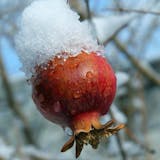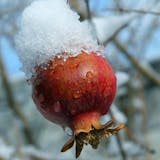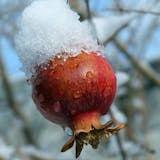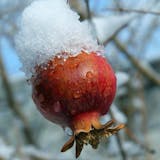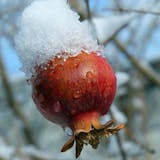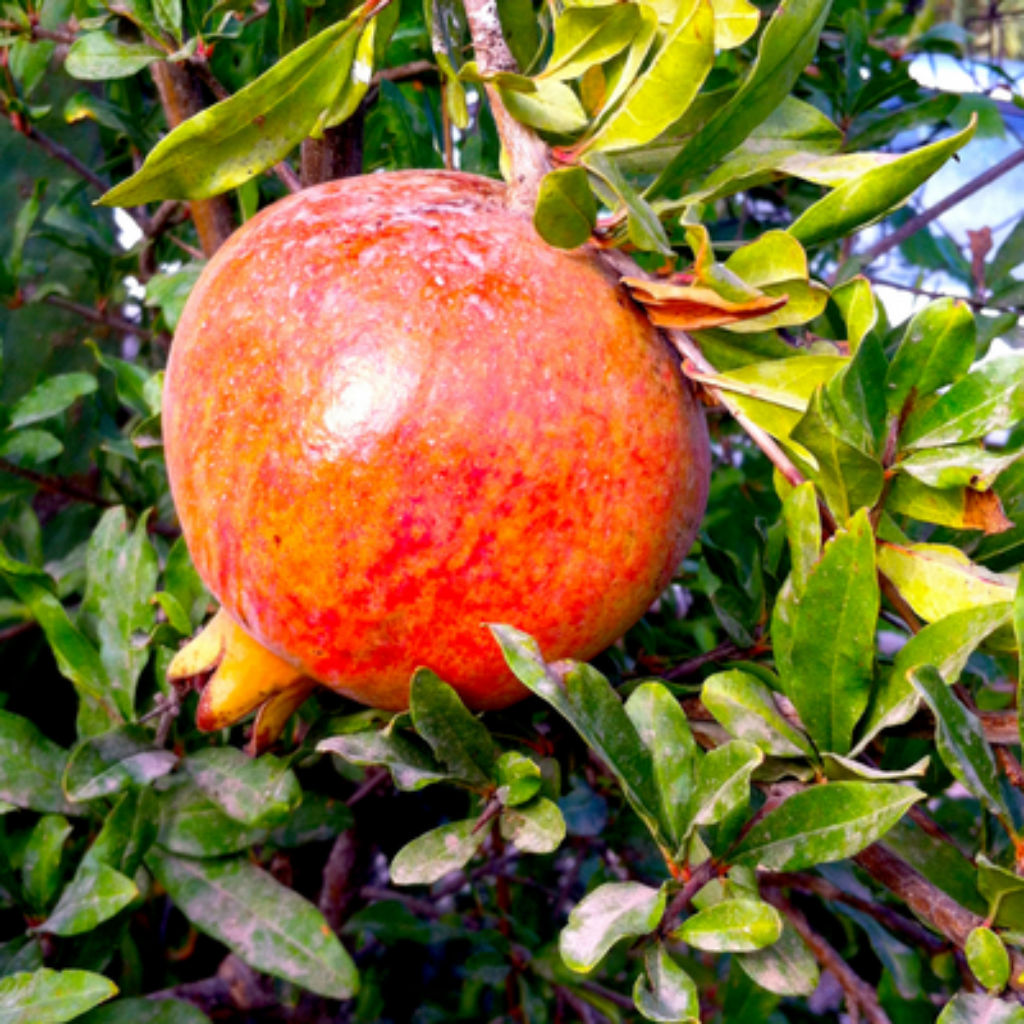


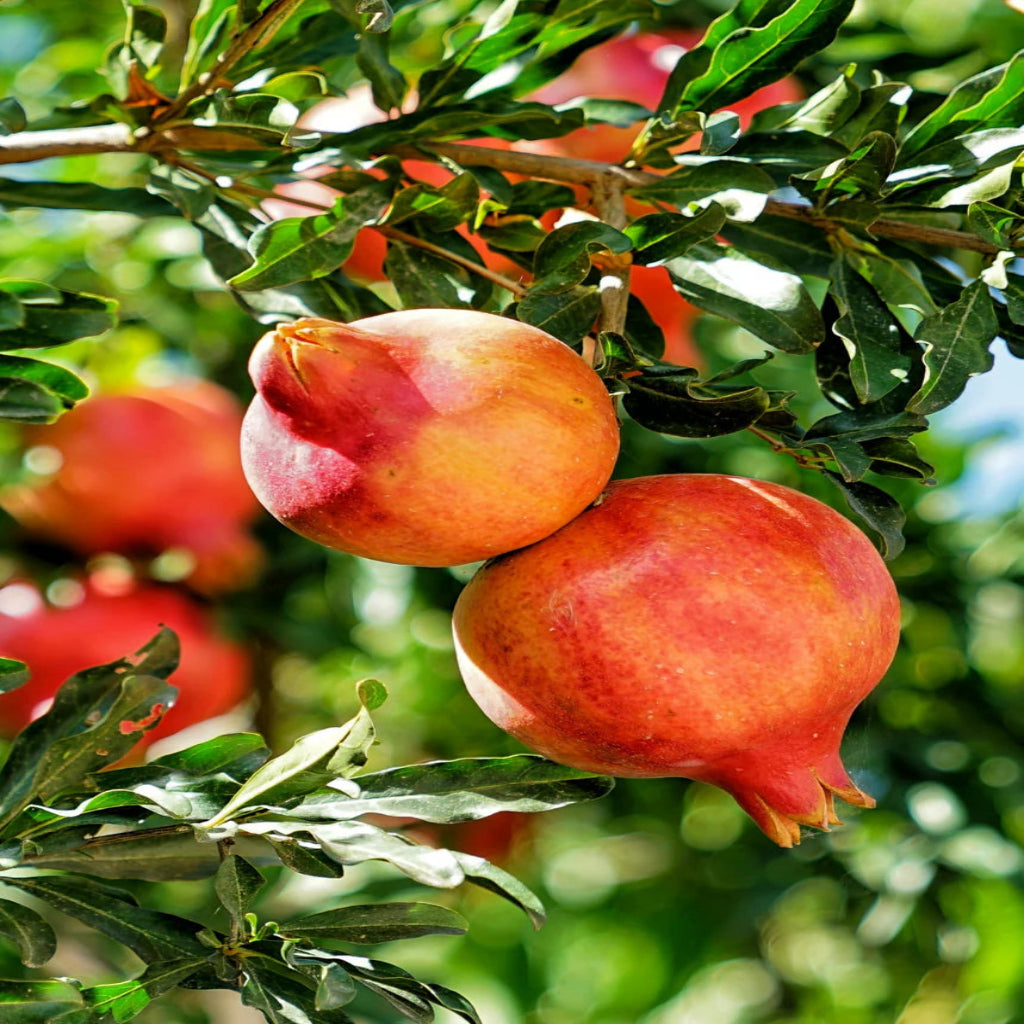

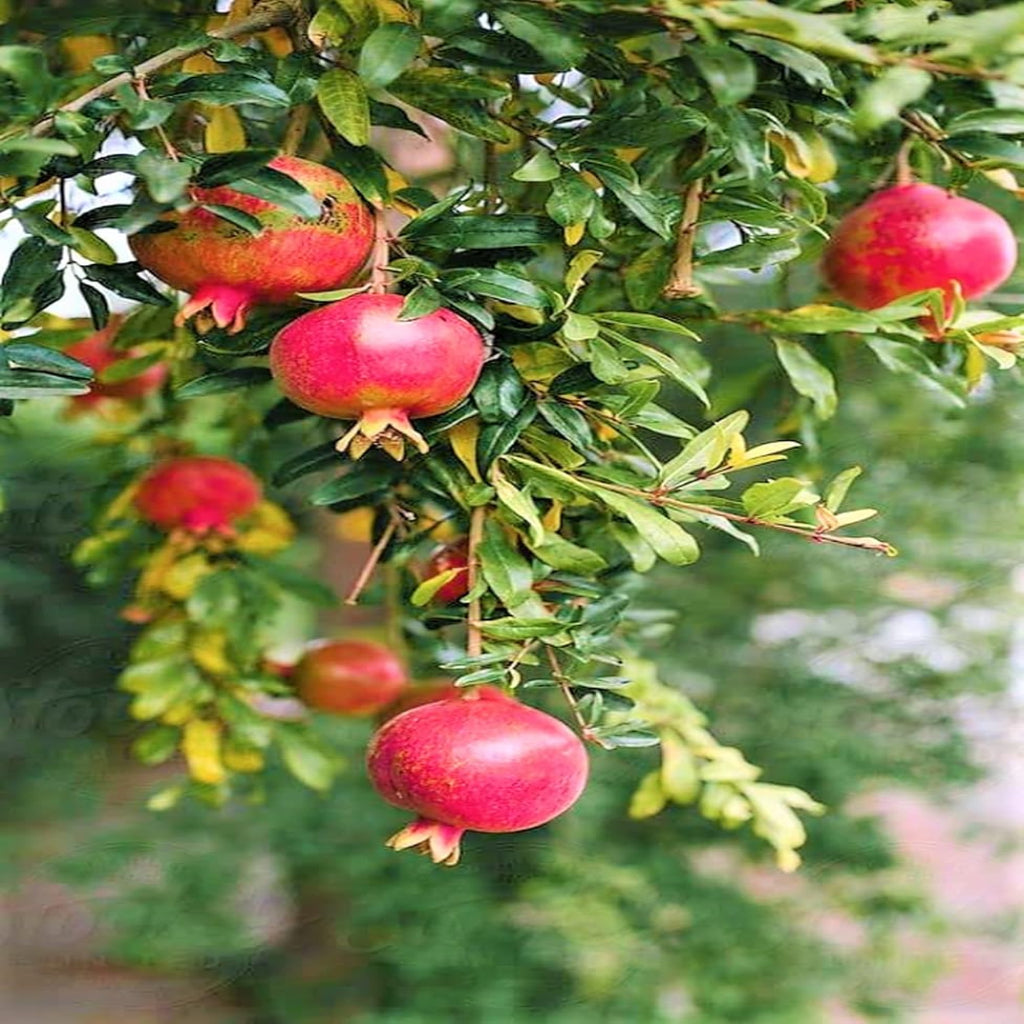

Product Details
Description
Zones

Plant Care Tips
Local search
Customer Service
Pixies Gardens
2024 Mcdaniel Mill Road Conyers GA 30094
Email: cs@pixiesgardens.com
Frequently Asked Questions
What is the Salavatski Pomegranate Tree?
The Salavatski Pomegranate Tree is a cold-hardy, deciduous fruit tree known for producing large, sweet-tart pomegranates. It’s ideal for gardeners in cooler zones and works well in small gardens or containers thanks to its compact, dwarf growth.
Is the Salavatski Pomegranate tree cold-hardy?
Yes! The Salavatski is one of the hardiest pomegranate varieties, capable of withstanding temperatures down to 0°F. It thrives in USDA Zones 6–10, making it an excellent choice for northern climates.
How tall does a Salavatski pomegranate stand?
This is a dwarf pomegranate tree, growing about 6–10 feet tall and 6–8 feet wide. This makeswide. This makes it well-suited to small yards, patio spaces, or large pots.
When does the Salavatski Pomegranate tree bear fruit?
Fruit usually appears 2–3 years after planting, ripening in late summer or early fall. With proper care and proper sunlight, it may produce sooner.
Is it possible to grow a Salavatski Pomegranate Tree in a container?
Yes! The compact size makes it excellent for container gardening. Use a large pot with drainage and place it in a sunny location for maximum results.
Does the Salavatski Pomegranate tree need a pollinator?
No, it's self-pollinating, so a single tree can bear fruit. However, planting a second tree nearby can improve yields.
What kind of sunlight does it need?
The Salavatski Pomegranate Tree requires full sun—at least 6 hours daily—to produce healthy growth and fruit set.
Is it a drought-tolerant fruit tree?
Yes. Once established, Salavatski is a drought-tolerant pomegranate tree, needing only occasional watering during dry spells.
What type of soil is suitable for this tree?
It grows best in well-drained, loamy soil with a neutral to slightly acidic pH. To prevent the rot of the roots, you should avoid heavy, compacted, or constantly wet soil.
What should I do in the winter to protect my Salavatski tree?
In colder regions, mulch heavily around the base to insulate the roots. For young trees, use a frostuse a frost cloth or wrap to protect them during severe cold snaps.
What does the Salavatski Pomegranate fruit taste like?
The fruit has a sweet-tart flavor, with juicy, deep-red arils and soft, edible seeds. It’s suitable for fresh eating, juicing, or adding to sweet and savory recipes.
When is the fruit ready to harvest?
The best time to harvest fruits is between September and October, when they turn a deep red and feel heavy to the touch.
Is the fruit seedless?
No. Like all pomegranates, the Salavatski fruit contains edible seeds inside the arils, which are rich in fiber and nutrients.
Is the Salavatski Pomegranate fruit healthy?
Yes! It’s high in vitamin C, potassium, and antioxidants, offering health benefits like improved immunity, heart support, and better digestion.
Can I store or preserve harvested fruit?
Absolutely. Whole fruits can be stored in the refrigerator for several weeks. Fresh or preserved juice can be made from the arils, and sauces, syrups, or smoothies may be made from the juice.










